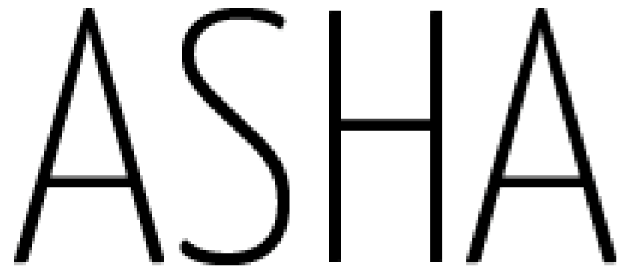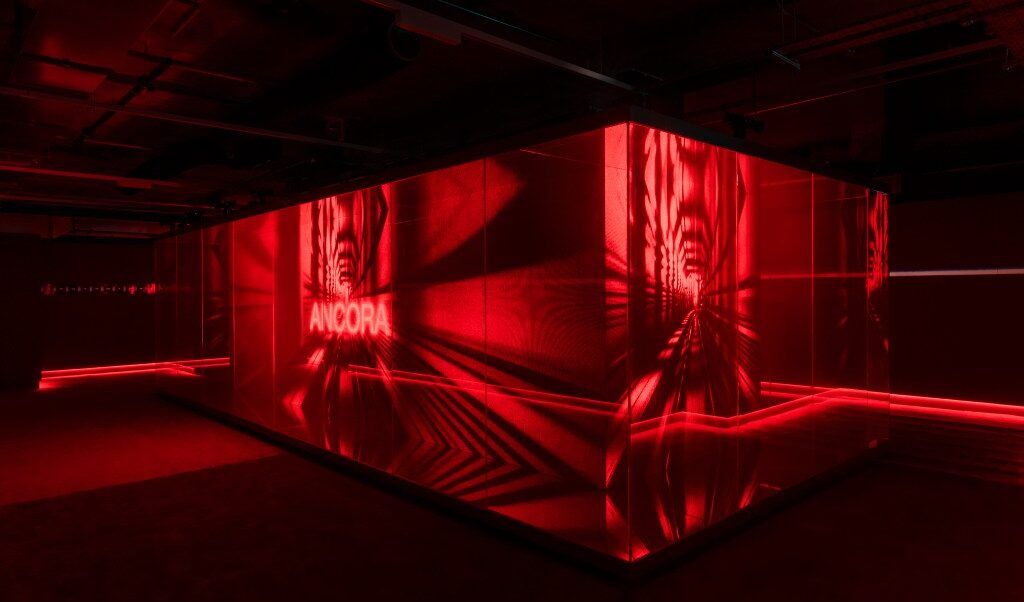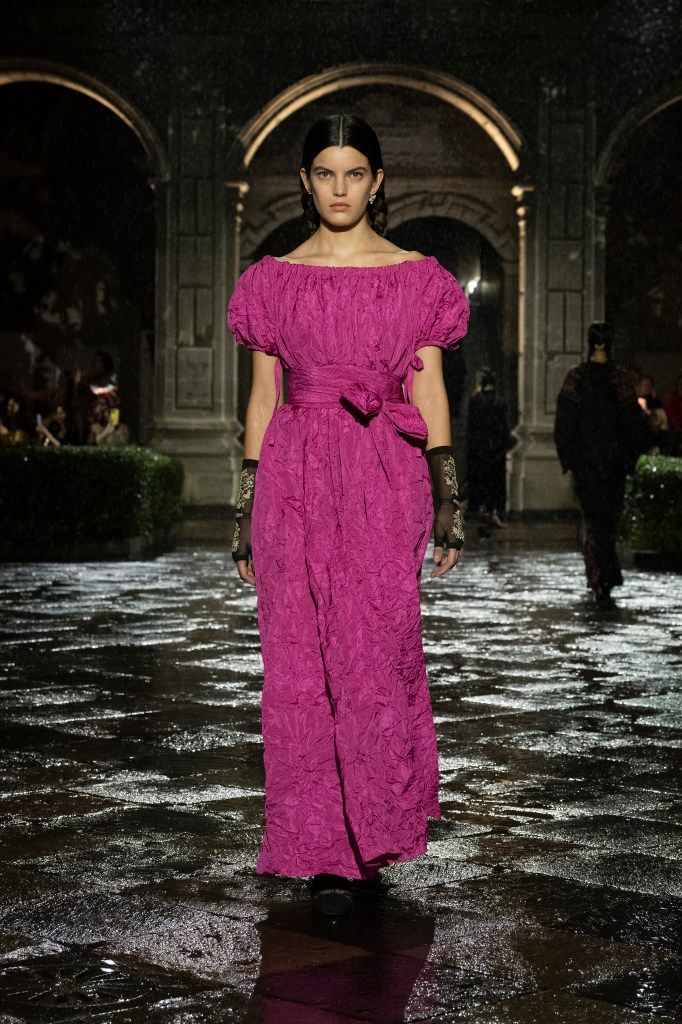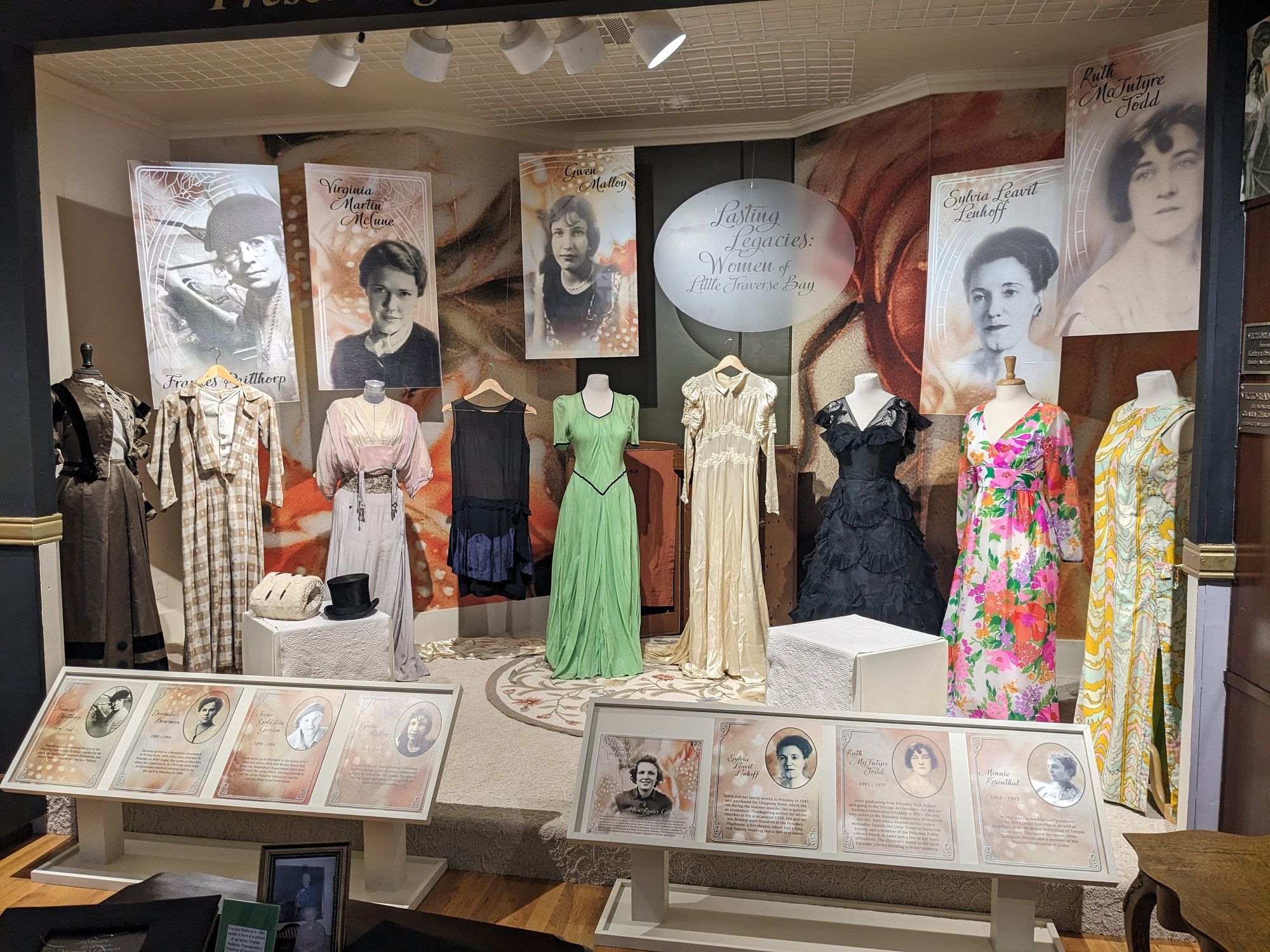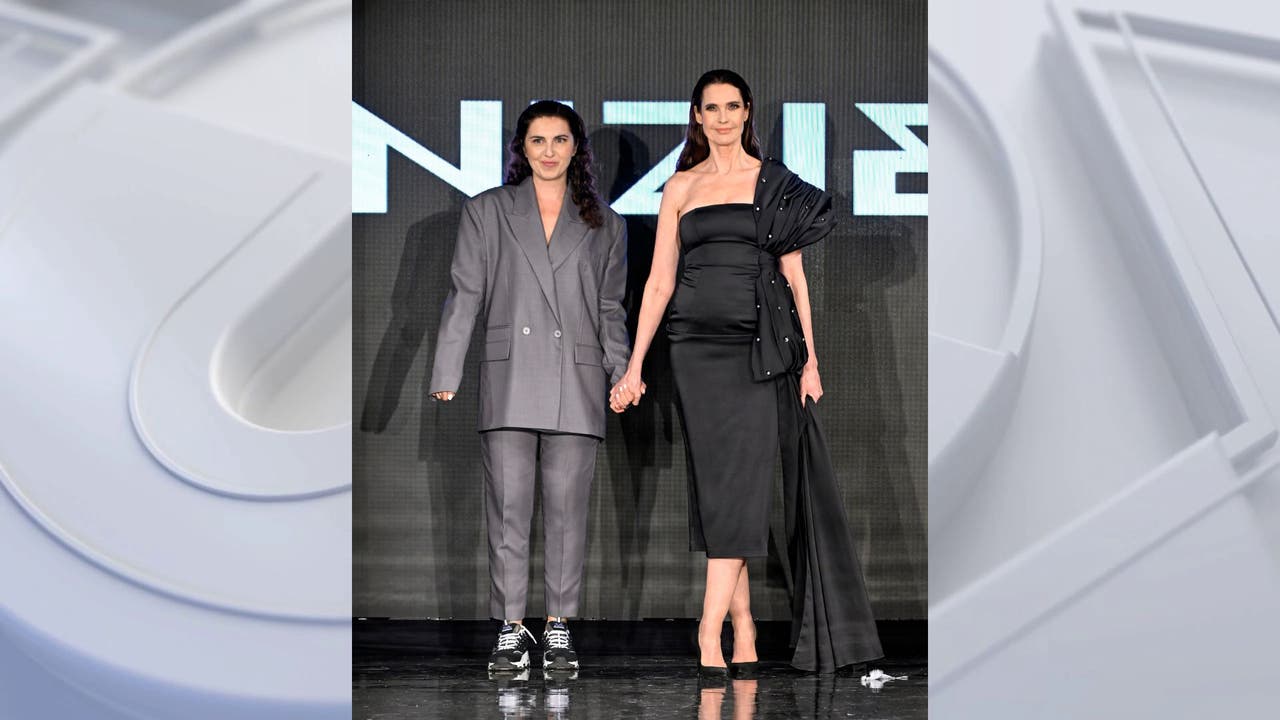LONDON — Two medium-sized white octagonal domes resembling the dome of the Florentine cathedral Santa Maria del Fiore have arrived outside 180 Studios at 180 The Strand in London as part of Gucci’s immersive exhibition “Gucci Cosmos,” which made its debut in Shanghai in April.
The timing of the exhibition was a tricky one — it was post Alessandro Michele’s exit in November 2022, but pre new creative director Sabato De Sarno’s first collection, which was shown last month at Milan Fashion Week.
Still, the show must go on and it did, but it’s in London that it’s regrouping and restarting the process with a touched-up appearance and new concepts that take into consideration De Sarno’s vision.
The exhibition and domes outside the building will stay put until Dec. 31, when the show will end.
“Gucci Cosmos” has been a collaboration process between British artist Es Devlin and Italian fashion theorist and critic Maria Luisa Frisa, who has curated a selection of images, objects and illustrations that tell the story of the brand’s 102 years of craftsmanship within fashion and the wider culture.
The rooms inside the exhibition touch upon the key moments that have made Gucci a household name; revisits the brand’s colorful archive with nuggets of nuances dotted around each corner and inside each drawer, and dives into what an Anglophile its founder Guccio Gucci was.
The London iteration will include two new rooms thought out by De Sarno with Devlin.

“Gucci Cosmos” in London.
The journey into the Gucci Cosmos starts inside the famed lobby of the luxury hotel The Savoy, where Guccio Gucci worked as a luggage porter. His observations of guests coming in and out with their exquisite luggage is what inspired him to start an artisanal luggage atelier in 1921.
In 2021, the hotel collaborated with Gucci on the transformation of the Royal Suite, featuring pieces from the Gucci Décor line: wallpaper with the brand’s double G logo; monogrammed cushions; scented candles, and more.
The Savoy has always been at the forefront of modernity, as it was one of the first hotels in the U.K. to have electric elevators, en-suite bathrooms, and to be lit by electricity, which have all been translated into the exhibition.
Guests will be welcomed by a café offering red-colored beverages and snacks.
The lobby leads into a red room, a new addition to “Gucci Cosmos” replicating the elevator of The Savoy with six backless vanity chairs seated under mirrors that turn into a screen that plays a video for seven minutes, the same time that it took the elevator to go up and down during Gucci’s time at the hotel.
The voice in the elevator is Devlin’s, retelling the story of the elevator.
“I started to imagine this 18-year-old intern [Gucci] and what he would do with the guests. When he had rather competent travelers, he would probably talk to them and start finding out about their country pursuits, their horses, cars and country houses. And when they were nervous, he’s not to meet their gaze, so he was probably looking at the detail of their luggage, the stitching, the materiality and polish, and how each piece of luggage and bag came to be,” said Devlin in a preview interview.

“Gucci Cosmos” in London.
AGNESE BEDINI
Out of the elevator, a spiral staircase awaits for the third section, “Portals,” modeled after the baggage claim area in an airport with a circular conveyor belt installation showcasing Gucci’s luggage history, as well as its lifestyle arms, such as monogrammed tennis and golf bags from the ‘70s.
A few of the suitcases have an interactive element to them with pop-outs and moving images coming out from within. Unlike the Shanghai exhibition, the suitcases are plain white and clay-like to emphasize a new vision, a cleanser palette almost.
Exiting “Portals” is a wooden hallway plastered with the history of Gucci, from Tom Ford’s tenure to Frida Giannini, Alessandro Michele and De Sarno.
On the way to the rooms “Eden” and “Zoetrope,” two paths await, one focused on Gucci’s signature floral motifs and the other on its equestrian roots.

“Gucci Cosmos” in London.
AGNESE BEDINI
“Eden” is an intimate, low-ceilinged room with plants and animals coming off the wall in white paint. The space traces how Italian artist and illustrator Vittorio Accornero de Testa’s floral design featuring 43 varieties of flowers, insects and plants with 37 colors, commissioned by Rodolfo Gucci for Princess Grace of Monaco, has been reimagined by the house’s creative directors over the years, from Ford’s floral Jackie bag to a sheer gown by Giannini for the Gucci Flora fragrance campaign.

“Gucci Cosmos” in London.
In “Zoetrope,” Frisa has peeled back the layers to examine the relationship between human and horse with Gucci’s horsebit accessories that waves into fetishism. It’s the first place in the exhibition where a look from De Sarno’s spring 2024 show is featured, a python effect jacket and HotPants in red, teal green and white with matching platform loafers — signaling the brand’s drive to restore its luxury appeal as it concentrates on a timeless approach with a more minimal bent.

“Gucci Cosmos” in London.
AGNESE BEDINI
In Shanghai, the room “Two” contained 10-meter-tall white statues, but because of the space constraints at 180 Studios, the statues now hover just above the floor rotation of six collections being projected onto them.
A piece of Gucci’s archives in Florence comes to life in “Archivio,” a baby blue maze filled with cabinets, drawers and mirrored ceilings that showcases the brand’s rich handbag history including the Bamboo 1947, the Jackie 1961, the Horsebit 1955, the Gucci Diana, the Dionysus and De Sarno’s two red bags, a mini version of the Jackie with a hook clasp in silver hardware and a bucket version of the bag.

“Gucci Cosmos” in London.
The deep, mature red shade is a combination of all red Gucci bags mixed together to form this new shade.
“Red is actually everywhere at Gucci. The very first Jackie bag was black with a red lining. I went to the Savoy Hotel, where Guccio Gucci worked and the elevator, inside, is red,” De Sarno told WWD in his first interview in September.

“Gucci Cosmos” in London.
There are bags in the archive that have not yet been revisited, but in due time could be popular, such as a classic boxy top-handle bag with a horseshoe clasp or a rectangular crossbody with a silver tiger’s head attached to a piece of gold hardware.
Under the cabinets, guests can pull out the draws to rediscover past Gucci artifacts, including books, illustrations and campaign imagery.
The eighth room, “Cabinet of Wonders,” contains a red rotating cabinet that opens and closes to display key Gucci moments with an homage to the U.K. Items include Harry Styles’ sequined Coachella jumpsuit; a jacket from Michele’s collaboration with Elton John, and a black dress with blue bows worn by Irish disability activist Sinéad Burke.

“Gucci Cosmos” in London.
De Sarno’s gold jewelry that debuted on Gucci’s Instagram with a photo of Daria Werbowy at Chateau Marmont wearing only a bikini bottom also features in the cabinet along with a crystal studded Jackie bag and top that Jessica Chastain has worn.
“‘Carousel’ is again another way of expressing the relay dance from one designer to the next within the house,” explained Devlin, referencing the penultimate room that contains 25 mannequins dating back to the ‘70s.

“Gucci Cosmos” in London.
AGNESE BEDINI
As the looks rotate on a conveyor belt, illustrations by four U.K.-based artists are projected onto the screens, as well as the illustrations that were featured in the Shanghai exhibition.
The exhibition concludes in an empty room called “Gucci Ancora” with a large rectangular box that plays a collage of videos and images with a red hue layered over.
“It picks up from that revolving red box we had in ‘Cabinet of Wonders.’ This time it’s a glass heart [metaphorically] for a special film using his personal footage. It’s almost vulnerable, it’s somebody peeling their skin off and saying, ‘I’m so committed to this, I’m actually going to peel off a layer of me and share it,’” said Devlin.
In the shadowed room, phrases run across in Italian and English while a voiceover of Devlin and De Sarno plays on a loop.

“Gucci Cosmos” in London.
AGNESE BEDINI
On one side of the room, small hooks are attached to the wall with interchangeable clear plastic slabs that contain words chosen by De Sarno for the guests to interact with and tell their own narrative.
“I like words a lot, they have weight and a precise meaning, they convey emotions, so I like artists who use words, Robert Barry or Alighiero Boetti,” said De Sarno.
The expression of art seems to be a recurring theme so far in the designer’s work.
Gucci’s recently opened 15,000-square-foot store on New Bond Street is filled with artwork from Liliana Moro, Franco Mazzucchelli, Alighiero Boetti, Matilde Cassani, Jonny Niesche, Massimo Uberti, Joshua Woolford, Simon Callery and Tim Etchells.
The works have been selected by art consultant Truls Blaasmo to celebrate Italian artistry, as well as art forms such as geometry, primary colors, sculptures and text-based art.
Lucio Fontana’s red “1967,” artwork will be on display during Frieze Week in the Salon room this week and stay there afterward.
More artwork will be introduced later in the year as the brand pushes to turn the store not only into a shopping destination but a living space that tells the story of Gucci in a museum-like way.
